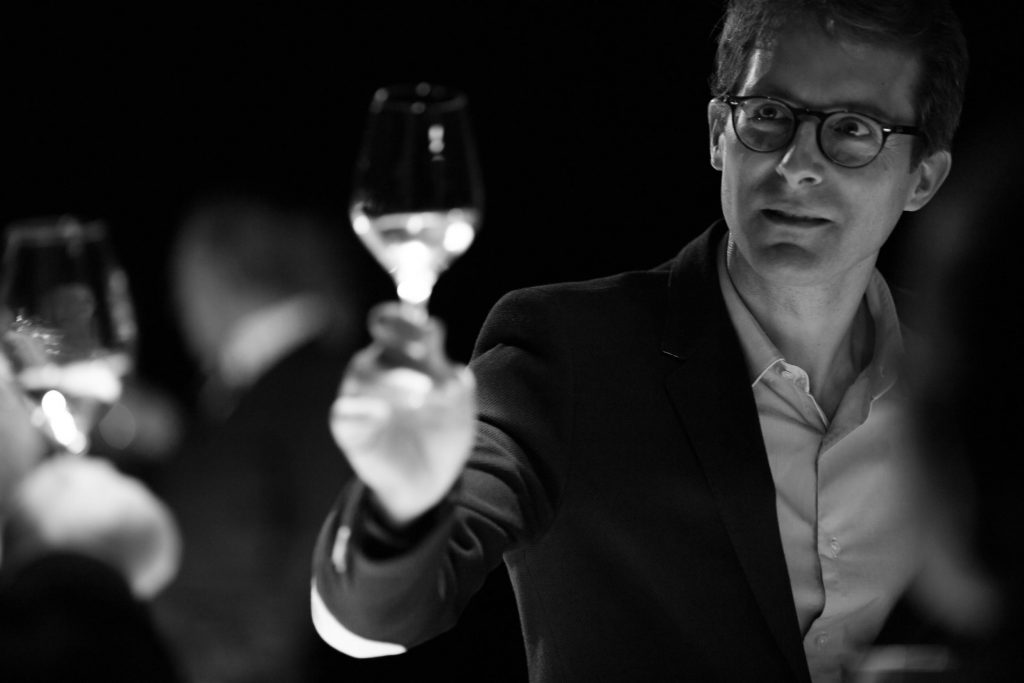Dom Pérignon: we speak to Vincent Chaperon
Author: Charlie Geoghegan

Vincent Chaperon became Chef de Cave at Dom Pérignon in 2019. Here, he talks about daily life, climate change and the launch of the 2003 Plénitude 2.
Could you describe your role as Chef de Cave at Dom Pérignon?
It’s extremely diverse, involving not only everything related to the vine, winemaking and maturation in the cellars, but also communicating about our Champagne, creating and participating in experiences and travelling and meeting our consumers around the world. But if there’s one word that sums up these elements, it’s “creation”. That’s the prism through which all my actions and decisions ultimately pass.
Can you talk us through a typical day in your life?
There’s never a “typical” day. It varies according to many different cycles, which intersect throughout the year. There are the cycles of nature and the seasons, which impact the vines and the harvest. There are cycles in elaborating our wines, including fermentation and assemblage (blending). There are even cycles of communication, when we launch new Dom Pérignon creations and share them around the world. These cycles are constantly changing and reshuffling my daily schedule throughout the year.
What was the rationale behind launching Plénitude 2?
The idea behind Plénitude 2 has always been to share more about Dom Pérignon with our consumers. Quite simply, Plénitude 2 shares the arc of a wine’s life – its history. And that history does not stop at the vintage; our wines continue to become more intense, complex and streamlined with longer maturation.
What happens in the bottle during this additional ageing time?
With this extra time, the inner activity in the bottle increases. The yeast transfers its energy to the wine – a mysterious transfer of life. After close to 15 years, expansion of energy reaches its peak, and Dom Pérignon rises to an apex of essential, radiant vitality in its state of Plénitude. Elevated to new heights, it unfurls across every dimension – wider, deeper, longer, more intense – and is gifted further with an extended longevity.
How do you determine when Plénitude 2 is ready for release?
It’s never predetermined. We closely follow the evolution of each of our vintages during their maturation in the cellars. Every six months or so, we open several bottles of each vintage. As soon as we feel that the wine is entering its peak of energy and reaching its Plénitude 2, we prepare for its release. It’s the wine that decides.
How does Plénitude 2 stand alongside other wines in the Dom Pérignon portfolio?
I tend to say that Plénitude 2 is “more” Dom Pérignon, because the additional maturation time further enhances Dom Pérignon’s singularity. It’s Dom Pérignon “higher and further”. Even if Dom Pérignon is “one and indivisible”, Plénitude 2 carries for the whole the art of addressing time. Time is in the equation of Dom Pérignon, and Plénitude 2 tells us that maturation is a time of construction, a time of growth and expansion for the wine.
One of the greatest challenges facing the industry is climate change. What actions are you taking?
We’re acting in two ways: reinventing ourselves every year; and changing our vine-growing and winemaking in the mid- and long-term.
Every year, we’re facing new climatic conditions which impact the vine growth and the grapes’ quality. We’ve been experiencing earlier harvests in August, warmer temperatures, heatwaves and drought. To respond to such situations, we’ve been adapting our grapes selection, our picking strategies. We’ve been experimenting with new processes such as oxygen management on juices. We’ve been adjusting others, like decreasing the dosage. Finally, we’ve been improving our monitoring by developing data acquisition which helps to make the right decisions at the right moment.
We’re also changing our vine-growing and winemaking to continue minimising our impact on the climate. More than ever, we promote biodiversity in the vineyard. We consider the vine not as a monoculture, but as a complex and complete system whose balance we have a responsibility to preserve. We continue to reduce our energy impact at the source. This includes everything from investing in electric tractors to experimenting with ways to recover the carbon emitted during our fermentation process.
How does Dom Pérignon differ from other prestige cuvées?
Today more than ever, Dom Pérignon is a luxury house. And one of our defining characteristics is that it bears the name of Champagne’s founding father. As such, Dom Pérignon represents all that heritage and history, and has a responsibility – as Dom Pierre Pérignon did – to lead Champagne to new horizons.


